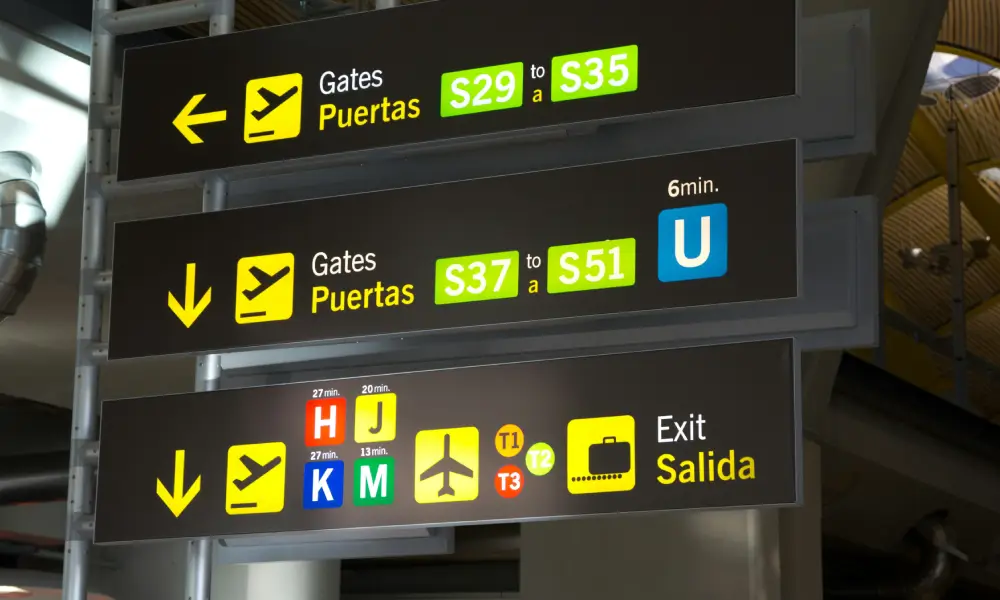Does Spain allow dual citizenship? The answer is both yes and no, depending on your specific circumstances and country of origin. Spain’s complex nationality laws create opportunities for some people to maintain dual citizenship while requiring others to renounce their original nationality, making it essential to understand the specific rules that apply to your situation before pursuing Spanish citizenship.
For Americans and other expats considering Spanish citizenship, understanding these nuanced regulations can mean the difference between maintaining valuable connections to your homeland and having to make difficult choices about national identity. Spain’s evolving approach to dual citizenship reflects modern global realities where people increasingly maintain meaningful ties to multiple countries throughout their lives.
Spain’s General Dual Citizenship Policy
Spain’s Constitution traditionally requires new Spanish citizens to renounce their previous nationality, but numerous exceptions and practical workarounds make dual citizenship possible for many people, especially those from certain countries or with specific family connections.
Constitutional Framework
Article 11 of the Spanish Constitution establishes the basic principles:
- Single nationality principle: Spain generally expects citizens to hold only Spanish nationality
- Renunciation requirement: Most naturalized citizens must formally renounce previous citizenship
- Special exceptions: Certain countries and circumstances allow dual citizenship
- Historical considerations: Former Spanish colonies receive preferential treatment
Practical Implementation
Despite constitutional requirements, Spain’s practical approach to dual citizenship is more flexible:
- No active enforcement: Spain rarely investigates or revokes citizenship for maintaining other nationalities
- Bilateral agreements: Treaties with specific countries allow dual citizenship
- Administrative tolerance: Unofficial acceptance of dual nationality in many cases
- EU context: European Union membership influences citizenship policies
Countries with Dual Citizenship Agreements
Spain has signed bilateral agreements with several countries that explicitly allow their citizens to maintain dual nationality when acquiring Spanish citizenship.
Latin American Countries
Most Spanish speaking Latin American countries have agreements allowing dual citizenship:
- Argentina: Full dual citizenship permitted
- Chile: Bilateral agreement allows dual nationality
- Peru: Citizens can maintain both nationalities
- Ecuador: Dual citizenship explicitly allowed
- Colombia: Agreement permits dual nationality
- Bolivia: Bilateral treaty allows dual citizenship
- Costa Rica: Citizens can hold both nationalities
- Dominican Republic: Dual citizenship permitted
Other Countries with Agreements
- Philippines: Historical connections allow dual citizenship
- Equatorial Guinea: Former Spanish colony with special status
- Portugal: Iberian Peninsula agreement allows dual nationality
- France: Limited circumstances permit dual citizenship
American Citizens and Spanish Dual Citizenship
Americans face particular challenges regarding dual citizenship with Spain because the United States is not among the countries with bilateral agreements, but practical solutions exist for many situations.
Official Spanish Position
Technically, Americans acquiring Spanish citizenship must:
- Renounce US citizenship: Formal renunciation required during naturalization process
- Oath of allegiance: Swear exclusive loyalty to Spain
- Submit documentation: Provide proof of renunciation to US authorities
- Accept single nationality: Officially recognize only Spanish citizenship
Practical Reality for Americans
Despite official requirements, many Americans successfully maintain both nationalities:
- Renunciation interpretation: Some lawyers argue renunciation statements aren’t legally binding under US law
- US position: America generally doesn’t recognize forced renunciations
- Administrative practice: Spain rarely investigates dual citizenship after naturalization
- Travel patterns: Americans can often use both passports for travel
Paths to Spanish Citizenship
Understanding different routes to Spanish citizenship helps determine which path offers the best opportunities for maintaining dual nationality.
Citizenship by Birth
- Born in Spain: Children born on Spanish territory to foreign parents
- Conditions apply: Parents must meet residency or other requirements
- Automatic dual citizenship: Usually retain parents’ nationality as well
- Registration required: Must register birth with Spanish authorities
Citizenship by Descent
- Spanish parents: Children of Spanish citizens automatically acquire nationality
- Grandparent connections: Some grandchildren of Spanish citizens qualify
- Historical memory law: Descendants of Spanish Civil War exiles
- No renunciation required: Usually can maintain other nationalities
Citizenship by Naturalization
The most common path for adult immigrants to Spain:
- Ten year residency: Standard requirement for most nationalities
- Reduced periods: Shorter requirements for certain countries
- Language requirements: Must demonstrate Spanish proficiency
- Integration exam: Knowledge of Spanish culture and constitution
Requirements for Spanish Citizenship
Acquiring Spanish citizenship requires meeting specific legal, linguistic, and integration requirements regardless of your path to naturalization.
Legal Requirements
- Legal residency: Continuous legal residence in Spain for required period
- Clean criminal record: No serious criminal convictions in Spain or country of origin
- Integration proof: Evidence of integration into Spanish society
- Good conduct: Demonstration of civic behavior and law abiding lifestyle
Language Proficiency
- DELE A2 certificate: Minimum Spanish language proficiency requirement
- Institute Cervantes exam: Official Spanish language testing
- Exemptions: Some countries and circumstances provide language exemptions
- Regional languages: Knowledge of regional languages may be required in some areas
The Application Process
Applying for Spanish citizenship involves multiple stages, extensive documentation, and potentially long waiting periods that require patience and careful preparation.
Initial Documentation
- Birth certificate: Apostilled and translated from country of origin
- Criminal background checks: From all countries of residence
- Proof of residency: Municipal registration and residence permits
- Medical certificate: Health clearance from authorized physician
- Language certificates: DELE A2 and CCSE exam results
Processing Timeline
- Initial review: 3 to 6 months for document verification
- Investigation period: 6 to 12 months for background checks
- Final decision: Total process typically takes 1 to 3 years
- Delays possible: Complex cases may take longer
Benefits of Spanish Citizenship
Spanish citizenship provides numerous advantages that make the complex application process worthwhile for many people seeking greater European mobility and rights.
European Union Rights
- Freedom of movement: Live and work anywhere in the EU without restrictions
- Educational access: EU university tuition rates and scholarship eligibility
- Healthcare coverage: Access to healthcare systems throughout EU
- Retirement benefits: EU social security coordination
Global Travel Freedom
- Visa free travel: Spanish passport allows visa free access to 190+ countries
- Diplomatic protection: Spanish consular services worldwide
- Emergency assistance: Government support during international crises
- Third country visas: Often easier to obtain visas with EU passport
Risks and Considerations
While Spanish citizenship offers many benefits, potential applicants should understand the risks and long term implications of dual nationality.
Legal Risks
- Citizenship revocation: Theoretical possibility for maintaining other nationality
- Conflicting obligations: Dual loyalty issues during international conflicts
- Legal complications: Complex legal situations with dual citizenship
- Tax implications: Complex tax obligations to multiple countries
Special Circumstances and Exceptions
Certain situations provide unique pathways to Spanish citizenship or affect dual citizenship possibilities in ways that may benefit specific applicants.
Sephardic Jewish Heritage
- Historical connection: Descendants of Jews expelled from Spain in 1492
- Accelerated naturalization: Two year residency requirement
- Documentation challenges: Proving Sephardic ancestry can be complex
- Cultural requirements: Knowledge of Spanish culture and language
Marriage to Spanish Citizens
- One year residency: Accelerated path for spouses
- Genuine relationship: Must prove authentic marriage
- Integration requirements: Still must meet language and cultural requirements
- Divorce implications: Citizenship generally retained after divorce
Professional Assistance and Resources
Given the complexity of Spanish citizenship law, most applicants benefit from professional guidance and support throughout the application process.
Types of Professional Help
Immigration Lawyers
- Legal expertise: Navigate complex Spanish nationality law
- Document preparation: Ensure all paperwork meets requirements
- Representation: Advocate during application process
- Cost: €1,500 to 5,000 depending on case complexity
Gestores and Administrative Assistants
- Bureaucratic navigation: Handle administrative procedures
- Document translation: Arrange apostille and translation services
- Government liaison: Interface with Spanish government offices
- Cost effective: Less expensive than lawyers for straightforward cases
Making the Decision: Is Spanish Citizenship Right for You?
Deciding whether to pursue Spanish citizenship requires careful evaluation of personal circumstances, long term goals, and willingness to navigate complex legal processes.
Ideal Candidates for Spanish Citizenship
- Long term Spain residents: People committed to permanent Spanish residence
- EU mobility seekers: Those wanting maximum European freedom of movement
- Family considerations: Parents wanting EU advantages for their children
- Business professionals: Entrepreneurs needing unrestricted EU business access
- Retirees: People seeking healthcare and lifestyle benefits
Questions for Self Assessment
- Long term commitment: Do you see Spain as your permanent home?
- Language willingness: Are you committed to achieving Spanish fluency?
- Integration desire: Do you want to fully participate in Spanish society?
- Family impact: How will citizenship affect your family members?
- Financial readiness: Can you afford the time and money required?
Navigating Spanish Dual Citizenship Successfully
Does Spain allow dual citizenship? The answer reveals the complex reality of modern nationality law, where official policies sometimes differ from practical implementation, and where individual circumstances can dramatically affect outcomes. While Spain’s constitution technically requires renunciation of previous nationality, numerous exceptions, bilateral agreements, and administrative practices create pathways for maintaining dual citizenship in many situations.
For Americans and other nationals considering Spanish citizenship, the key lies in understanding both the official requirements and practical realities, while carefully weighing the significant benefits against potential complications. Spanish citizenship opens doors to European Union rights, global travel freedom, and full participation in one of the world’s most desirable lifestyles, but it requires genuine commitment to Spanish society and culture.
The decision to pursue Spanish citizenship should never be taken lightly. It represents not just a legal status change but a commitment to embracing Spanish values, contributing to Spanish society, and maintaining connections to Spanish culture for yourself and potentially your descendants. However, for those who make this commitment authentically, Spanish citizenship provides a pathway to a richer, more internationally connected life that reflects the best of European values and Mediterranean lifestyle.
Whether you ultimately pursue Spanish citizenship, permanent residence, or another legal status, understanding your options empowers you to make informed decisions about your future in Spain. The country’s welcoming attitude toward immigrants who demonstrate genuine commitment to Spanish society means that multiple pathways exist for building a fulfilling life in this remarkable country that has perfected the art of living well.





